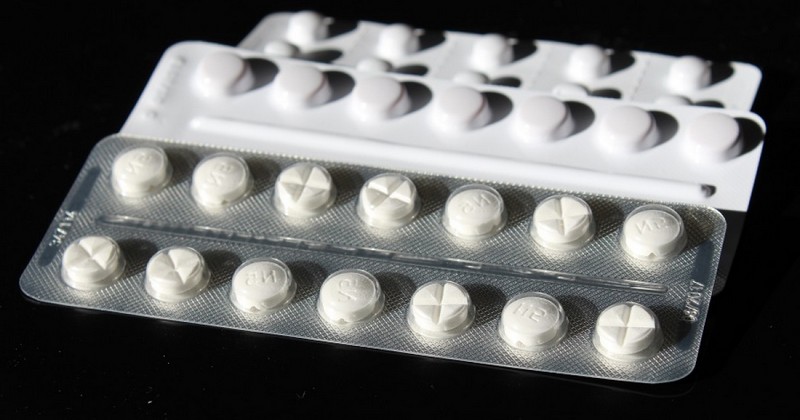Benzoctamine: uses and side effects of this drug.

An anxiolytic and sedative drug with several advantages in terms of its side effects.
Anxiolytic drugs are used to treat symptoms or conditions such as anxiety. In this article we will learn about a relatively new drug, which has sedative and anxiolytic properties, and also does not depress the respiratory system: benzoctamine..
We will learn about its composition, its mechanism of action, indications, side effects and studies carried out.
Benzoctamine: general characteristics
Benzoctamine is a drug with sedative and anxiolytic properties.. It is a relatively new drug, although it is true that its popularity is increasing as it can have anxiolytic and sedative effects comparable to other drugs without their potentially fatal respiratory depressant side effects.
It is marketed under the name "Tacitin". It is somewhat different from most sedative drugs in that in most clinical trials it does not produce respiratory depression, and actually stimulates the respiratory system.
Thus, when compared to other sedative and anxiolytic drugs such as benzodiazepines (such as diazepam), it is a a safer medication when it comes to reducing anxiety or calming the mind..
However, it should be noted that when benzoctamine is administered together with other drugs that cause respiratory depression (e.g. morphine), it may cause an increase in respiratory depression.
Compound
Chemically, benzoctectamine belongs to a group of compounds called dibenzobicyclooctodienes.It is a tetracyclic compound consisting of four rings that are configured three-dimensionally. This structure is closely related to that of the tetracyclic Antidepressant maprotiline.
Indications
Benzoctamine is used for the outpatient treatment of patients with anxiety, with the aim of controlling aggression, enuresis, fear and mild social maladjustment in children.
Thus, its main indication is anxiety. The evidence suggests that it is as effective as other medications for clinical anxiety, such as diazepam. Studies are mixed, with some suggesting that higher doses of benzocaine than diazepam are needed to produce the same pharmacological effects. However, as we shall see, its side effects are in part less dangerous than those of many of the other sedatives.
In fact, the most important thing about this drug is that it produces anxiolytic effects without producing the respiratory depression typical of other sedatives.. Thus, benzocotamine became an alternative to benzodiazepines, which could also be used in patients with respiratory insufficiency.
On the other hand, benzoctectamine can also be used for the treatment of hypertension.
Pharmacokinetics
Benzoctamine can be administered orally (in tablet form) or intravenously (injected directly into the bloodstream). (injected directly into the blood). Thus, the drug becomes 100% available to the body by the intravenous route, and 90% available if administered orally.
When administered orally, the dose is 10 mg three times a day; when administered intravenously, patients receive benzoctamine at a rate of 5 mg/minute until 20 to 40 mg are injected.
It is metabolized by the liver, and its elimination half-life (the time it takes the body to eliminate the substance completely) is between 2 and 3 hours. Its excretion is renal (excreted through the kidneys).
Effects
The anxiolytic effects of benzoctamine are similar to those of diazepam (another anxiolytic), but it differs from the latter in that benzoctamine has antagonistic effects on epinephrine and norepinephrine, and even seems to reduce serotonin..
Relatively little is known about how it carries out its effects, but studies point to serotonin, epinephrine and norepinephrine depletion as (partially) causing the pharmacological and behavioral effects of benzocotamine.
Side effects
Some of the side effects of benzoctectamine are: drowsiness, dry mouth, headache and dizziness..
Studies
Animal studies have shown how sedative hypnotic drugs tend to cause dependence in animals; in contrast, it has been shown that benzoctetamine does not produce addiction. In addition, other animal studies show how benzoctectamine reduces blood pressure through the adrenergic system.
Bibliographic references:
- Maître, L., Staehelin, M., Bein, H. (1970). Effects of benzoctamine, a new psychoactive drug, on catecholamine metabolism. Biochemical Pharmacology, 19(11): 2875-92.
- Sonó, H., Dale, M., Ritter, J.M. and Moore, P. (2003). Pharmacology (5. ed.). Edinburgh: Churchill Livingstone.
- Stahl, S.M. (2002). Essential psychopharmacology. Neuroscientific bases and clinical applications. Barcelona: Ariel.
(Updated at Apr 12 / 2024)